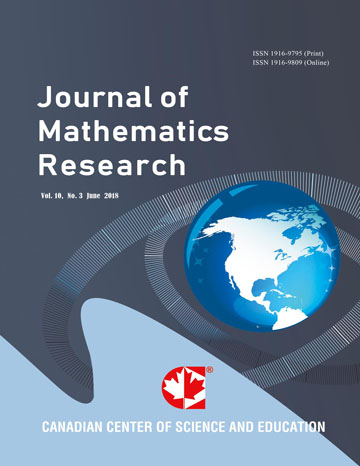A Transmission Dynamics Model of COVID-19 With Consideration of the Vulnerability of a Population
- Patricia Adjeley Laryea
- F. T. Oduro
- Christopher Saaha Bornaa
- Samuel Okyere
Abstract
A well documented characteristic of COVID-19 is that whereas certain infected individuals recover without ever showing symptoms, others regarded as vulnerable, usually age with comorbidities tend to succumb to more or less severe symptoms. To address pertinent issues, we formulate an $SEI_{A}I_{S}RS$ Transmission Dynamics model of COVID-19 where $I_{A}$ and $I_{S}$ respectively represent asymptomatic and symptomatic classes thus allowing the inclusion of parameters which are vulnerability sensitive. We define a vulnerability factor, $\phi$ and show that the model is globally asymptotically stable at the disease-free equilibrium when $\mathcal{R}_{0}<1$ and $\phi$ is appropriately bounded above. We also show that the model is globally asymptotically stable at the endemic equilibrium when $\mathcal{R}_{0}>1$ and $\phi$ is appropriately bounded below. Finally, we employ numerical analysis using Ghana data, to further illustrate the effect of vulnerability related parameter values on the trajectories of key variables of the model. We thereby demonstrated that if a dominantly young population is of sufficiently low vulnerability then $\mathcal{R}_{0}<1$, and the Transmission Dynamics exhibits global asymptotic stability at the disease-free equilibrium.
- Full Text:
 PDF
PDF
- DOI:10.5539/jmr.v15n5p47
Index
- ACNP
- Aerospace Database
- BASE (Bielefeld Academic Search Engine)
- Civil Engineering Abstracts
- CNKI Scholar
- DTU Library
- EconPapers
- Elektronische Zeitschriftenbibliothek (EZB)
- EuroPub Database
- Google Scholar
- Harvard Library
- IDEAS
- Infotrieve
- JournalTOCs
- MathGuide
- MathSciNet
- Open policy finder
- RePEc
- ResearchGate
- Scilit
- Technische Informationsbibliothek (TIB)
- The Keepers Registry
- UCR Library
- Universe Digital Library
- WorldCat
Contact
- Sophia WangEditorial Assistant
- jmr@ccsenet.org
